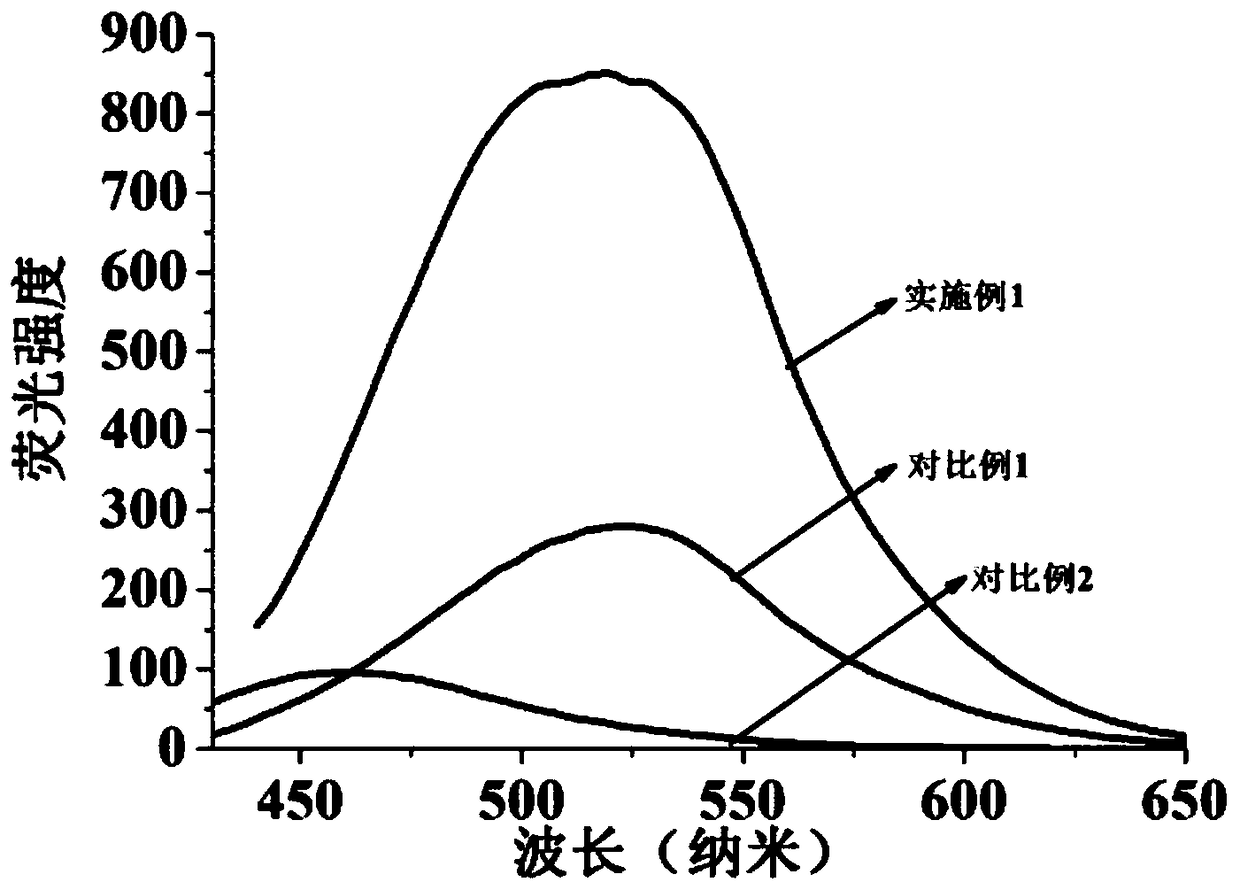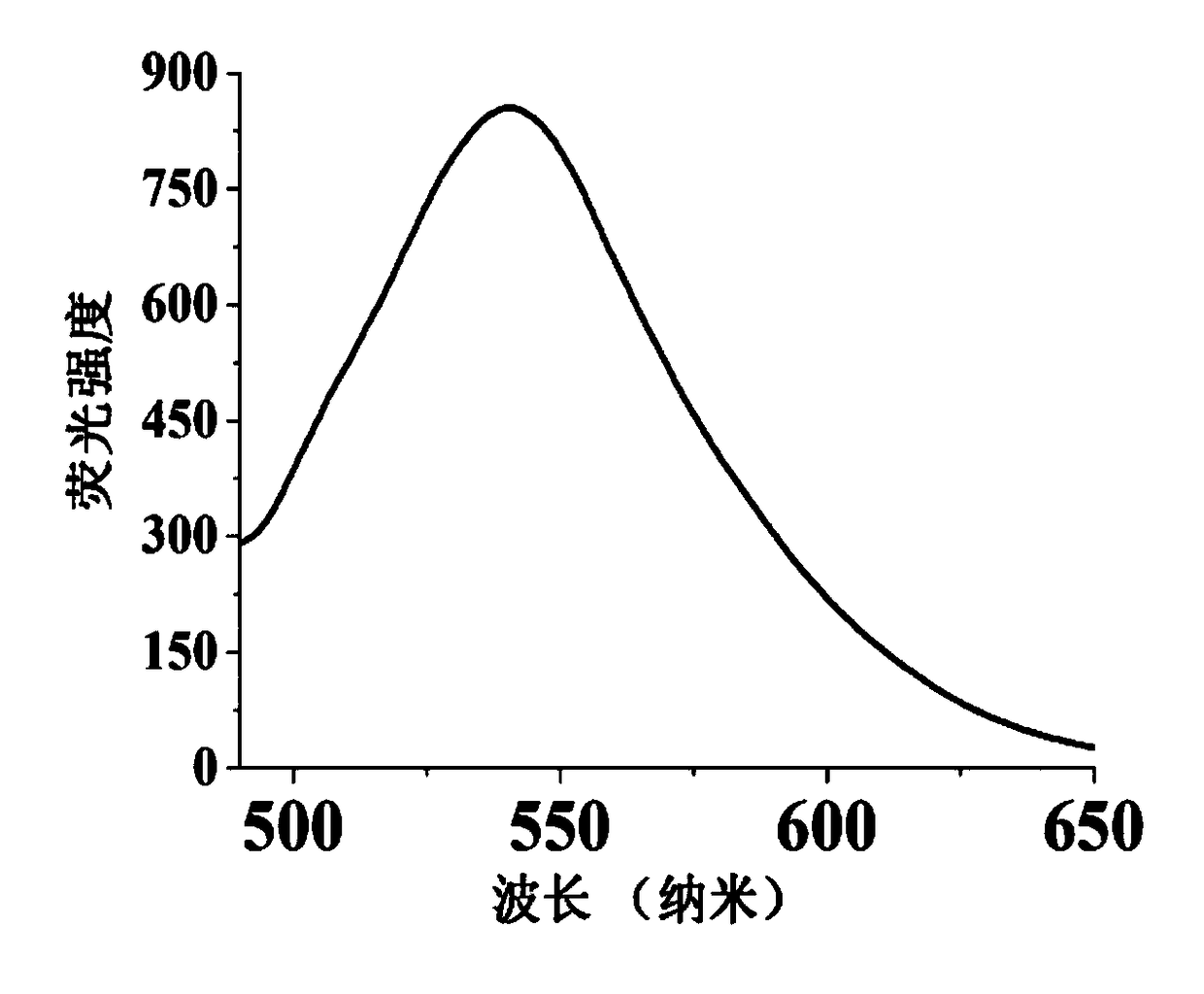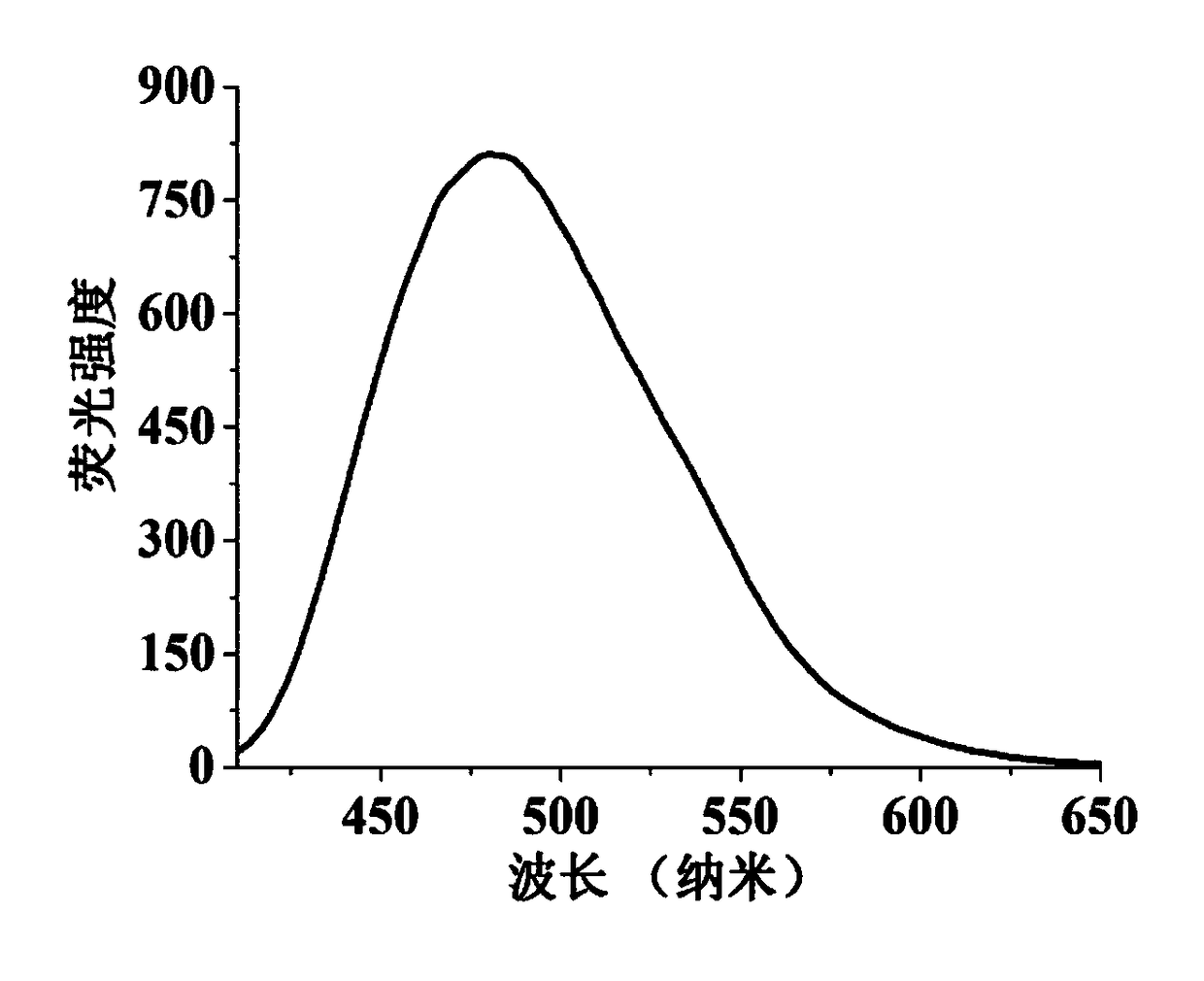Method for preparing yellow or green carbon dots
A carbon dot and green technology, applied in the field of nanomaterials, can solve the problems of difficult preparation of yellow or green carbon dots, high equipment requirements, low quantum yield, etc., and achieve easy large-scale production in factories, green operation, and cheap raw materials Easy to get effect
- Summary
- Abstract
- Description
- Claims
- Application Information
AI Technical Summary
Problems solved by technology
Method used
Image
Examples
Embodiment 1
[0046] (1) Dissolve 0.1g of vitamin C, 0.36g of polyethyleneimine (molecular weight: 1800) and 0.5g of citric acid in 20ml of ultrapure water, and stir for 10min under the protection of nitrogen.
[0047] (2) Transfer the mixed solution in step (1) to a hydrothermal reaction kettle, and place it in an electric constant temperature blast drying oven for hydrothermal reaction at 140°C for 50 minutes (before heating, you can use nitrogen or argon or other protective The air in the hydrothermal reaction kettle is discharged), and the green carbon dot solution is obtained.
[0048] (3) Mix the solution in step (2) with methanol at a volume ratio of 1:2, centrifuge at 8000rpm for 10min, remove the supernatant, and freeze-dry to obtain solid carbon dots.
[0049] Rhodamine 6G dissolved in ethanol was used as a reference (quantum yield = 95%). The quantum yield of carbon dots was calculated by comparing the ratio of fluorescence area (excitation wavelength is 420nm) to absorbance. A...
Embodiment 2
[0054] (1) Dissolve 0.8g of vitamin C, 0.18g of polyethyleneimine (molecular weight: 1800) and 0.8g of citric acid in 20ml of ultrapure water, and stir for 10min under the protection of nitrogen.
[0055] (2) Transfer the mixed solution in step (1) to a hydrothermal reaction kettle, and place it in an electric constant temperature blast drying oven for hydrothermal reaction at 150°C for 45 minutes (before heating, you can use nitrogen or argon or other protective The air in the hydrothermal reaction kettle was discharged), and a yellow carbon dot solution was obtained.
[0056] (3) After mixing the solution in step (2) with ethanol at a volume ratio of 1:5, centrifuge at 10,000 rpm for 10 min, remove the supernatant, and freeze-dry to obtain solid carbon dots. figure 2 It is the fluorescence spectrum of the carbon dot synthesized in Example 2. It can be seen from the figure that at the optimal excitation wavelength of 460nm, the emission peak of the carbon dot is located at ...
Embodiment 3
[0058] (1) Dissolve 0.05g of vitamin C, 0.08g of ethylenediamine and 2g of glucose in 20ml of ultrapure water, and stir for 5min under the protection of argon.
[0059] (2) Transfer the mixed solution in step (1) to a microwave reactor, ventilate nitrogen to discharge the air in the reactor and seal the microwave reactor, place it in a microwave digestion and extraction instrument at 180° C. for 5 min, that is A green carbon dot solution was obtained.
[0060] (3) Mix the solution in step (2) with acetonitrile at a volume ratio of 1:4, centrifuge at 10,000 rpm for 8 min, remove the supernatant, and dry in vacuum to obtain solid carbon dots. By calculation, the quantum yield of the carbon dots is 20.3%.
[0061] image 3 The fluorescence spectrum of the carbon dots synthesized for Example 3. It can be seen from the figure that the emission wavelength of the carbon dot is 480nm under the optimal excitation wavelength of 360nm. Under 365nm ultraviolet light, the carbon dots s...
PUM
| Property | Measurement | Unit |
|---|---|---|
| Emission wavelength | aaaaa | aaaaa |
| Emission wavelength | aaaaa | aaaaa |
Abstract
Description
Claims
Application Information
 Login to View More
Login to View More - R&D
- Intellectual Property
- Life Sciences
- Materials
- Tech Scout
- Unparalleled Data Quality
- Higher Quality Content
- 60% Fewer Hallucinations
Browse by: Latest US Patents, China's latest patents, Technical Efficacy Thesaurus, Application Domain, Technology Topic, Popular Technical Reports.
© 2025 PatSnap. All rights reserved.Legal|Privacy policy|Modern Slavery Act Transparency Statement|Sitemap|About US| Contact US: help@patsnap.com



